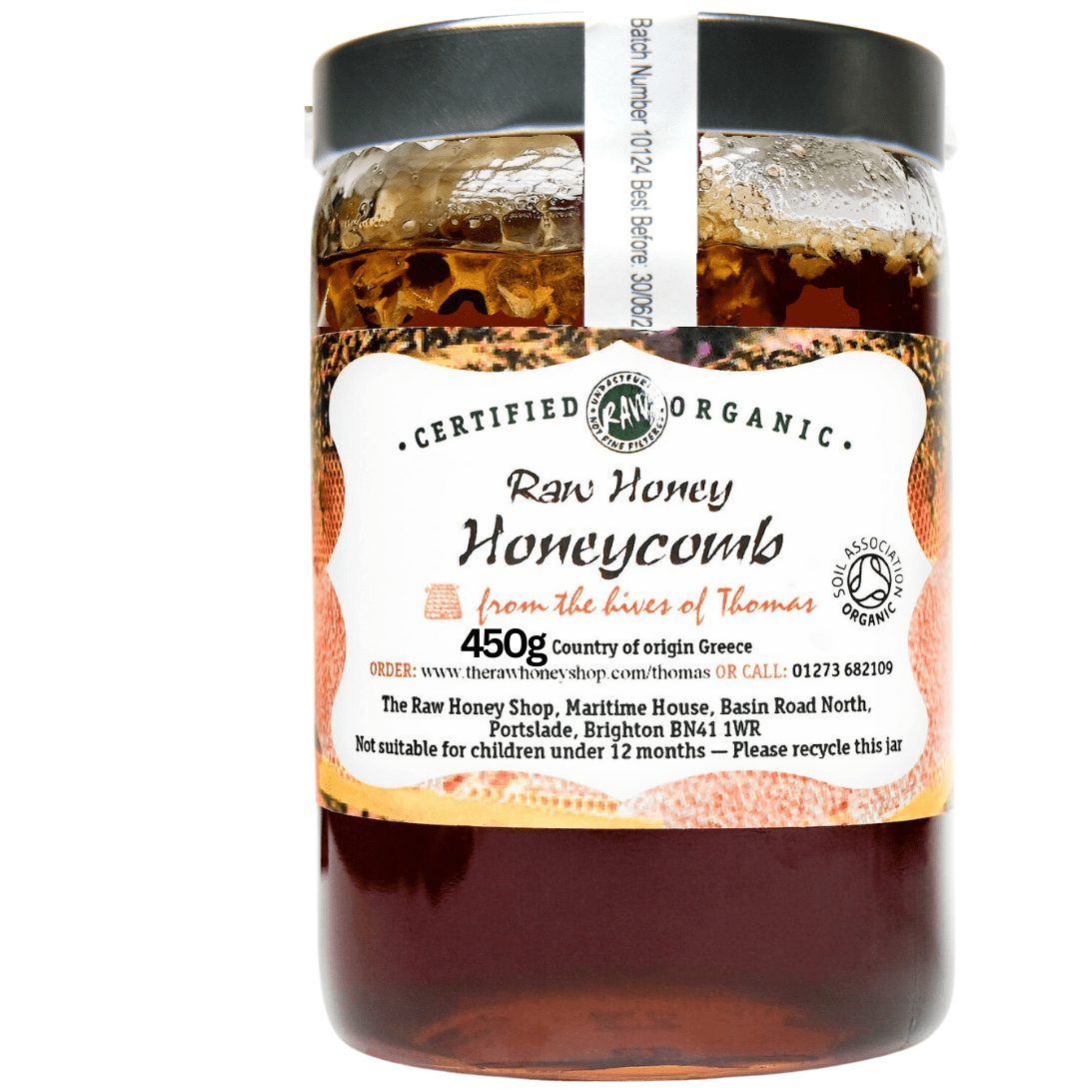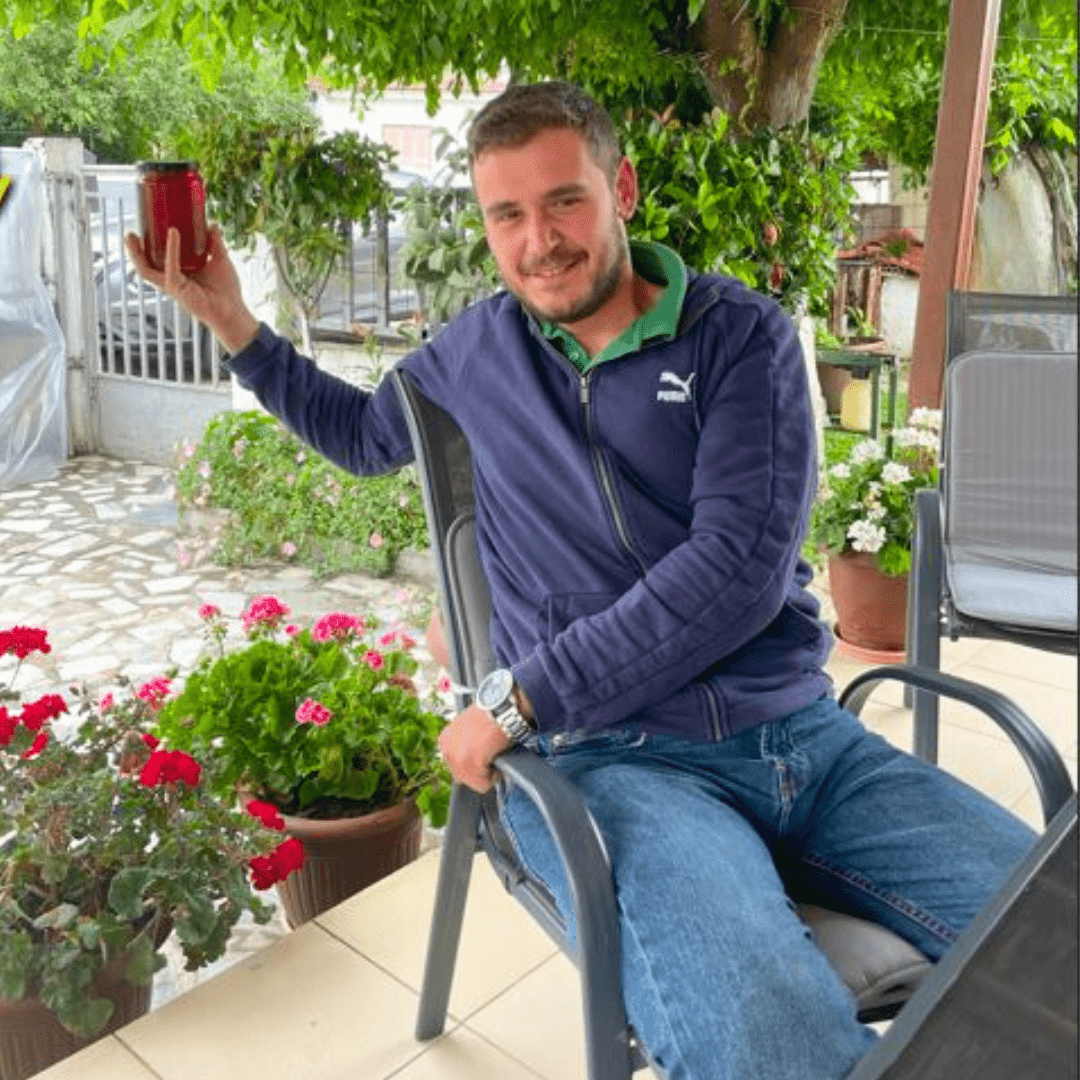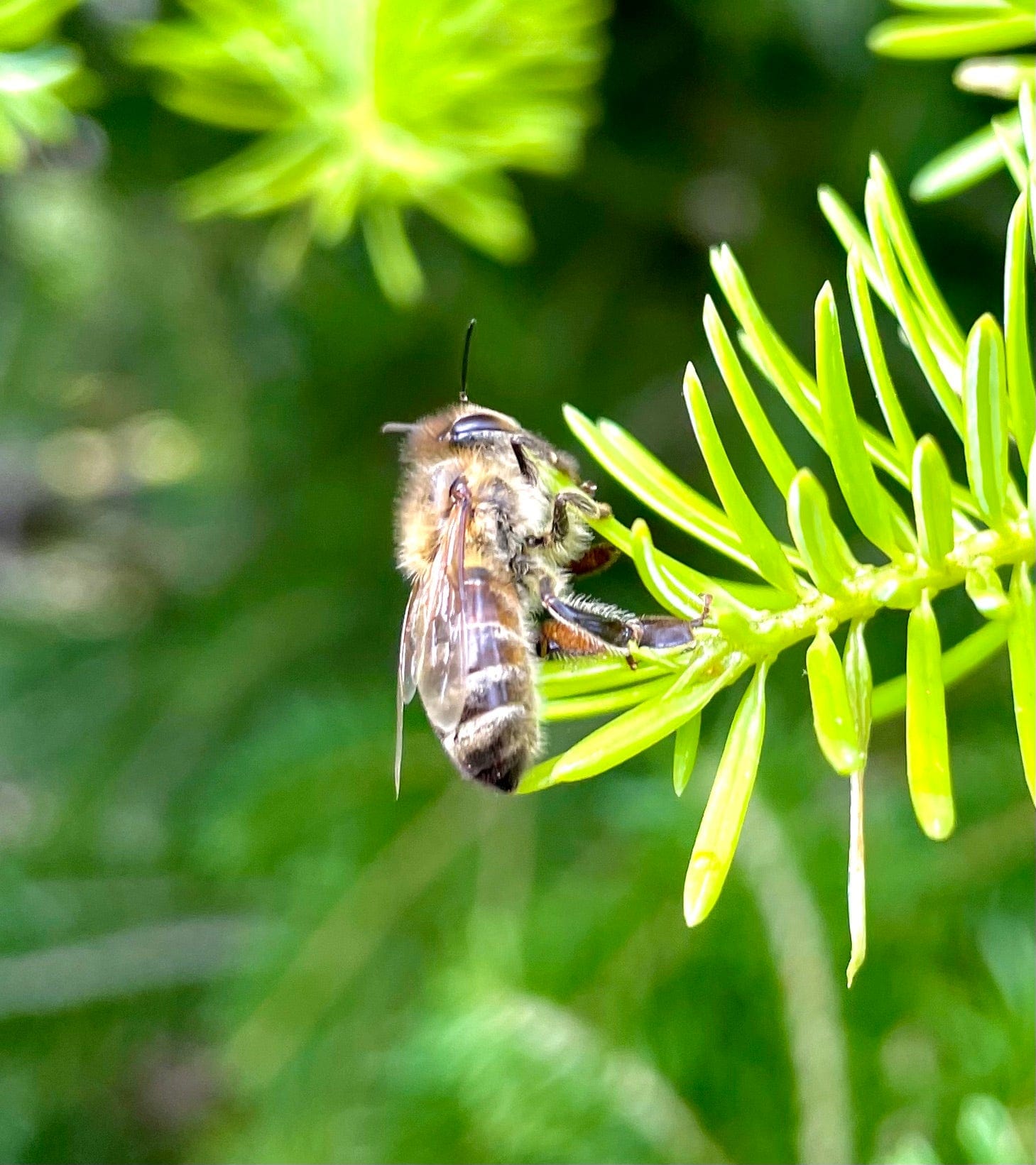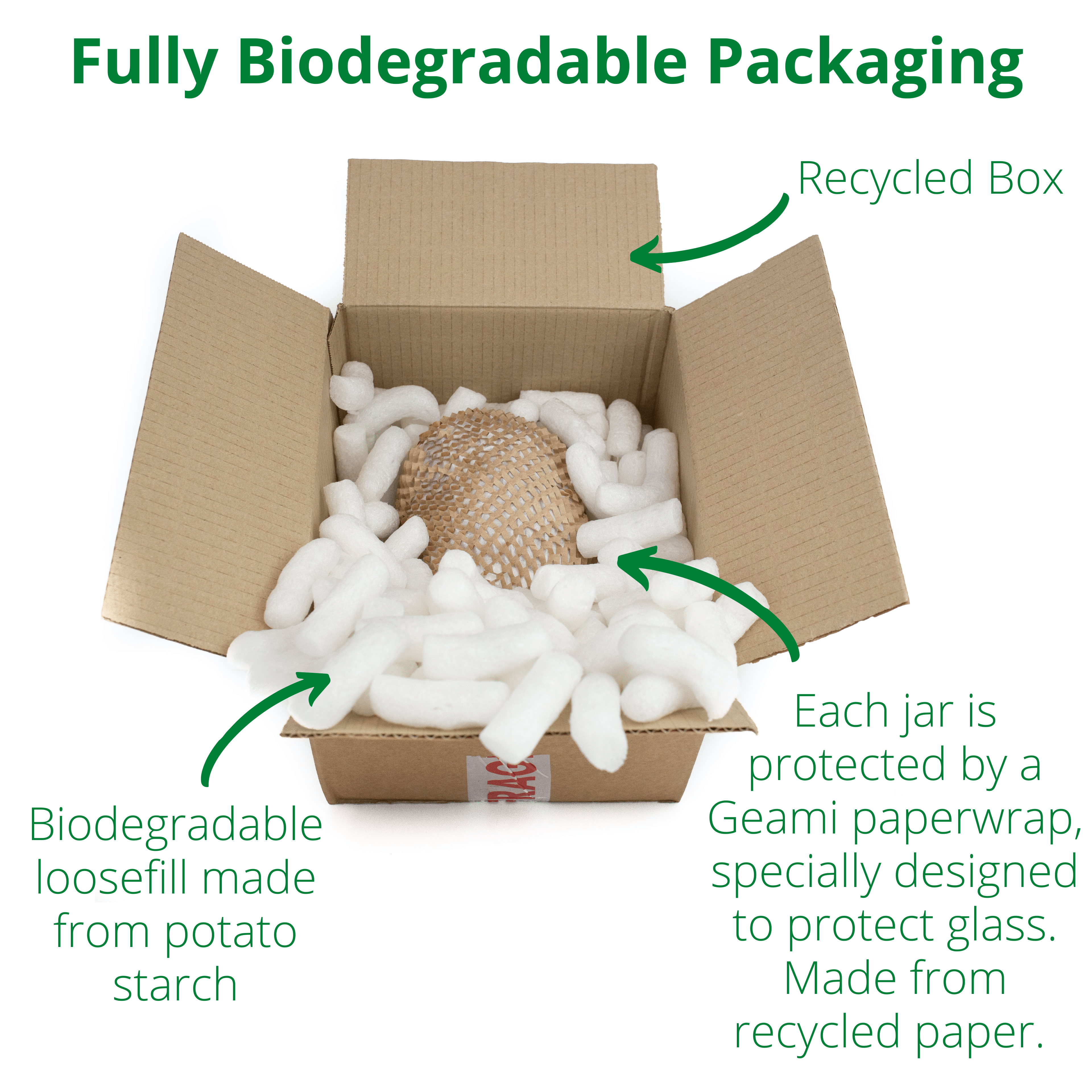Raw Certified Organic Greek Red Fir - with a Honeycomb Chunk Runny
- Regular price
- GBP 18.99
- Sale price
- GBP 18.99
- Regular price
-
GBP
Discovering this Red Fir was an adventure.
I'd been looking for a nice honey for a honeycomb chunk product for a couple of years. Then on a little adventure back in June (2023) the ideal honey was revealed to me. This is the story behind the honey.
One evening Thomas told me 'Tomorrow we are going to Mount Kaliakouda. You are going to love it there.'
So, this is the story......It was early one morning when Thomas and his Uncle Stefanos called for me from my hotel. We headed from the plains of Thessaly towards some mountains.
Stefanos was driving in his pickup truck, which was full of the aromas of honey and beeswax. Soon we were crossing gorges on the edge of the plain and then the ascent started. Through little mountain villages, we passed with old guys sitting drinking coffee and watching the world pass by.
Higher and higher we went, twisting and turning through hairpin bends that sent me sliding from one side of the seat to the other. There were less and less signs of human habitation until there was just forest carpeting the mountain.
After about an hour we were so high that we passed through the clouds.
We stopped for a moment to take in an incredible view across the mountains with Fir trees stretching below us and in the distance a lake in a valley.
Then a few minutes later we arrived at the place for the Red Fir honey.
This was a real high mountain wilderness.
On the road margins were a mass of wildflowers. Growing naturally, without any contamination from pesticides or herbicides.
I could hear the bees busily working the Fir trees around us, flying backward and forward to the hives.
This was my idea of paradise. The air was so pure, you felt a kind of mental clarity and wellness you only experience in really remote mountain places.
Whilst I took photos Thomas and Stefanos checked the hives and erected a fence to keep the bears out, who of course like nothing better than a meal of bee grubs and Red Fir Honey.
Then, finally after packing up their beekeeping equipment in the back of the pickup Stefanos passed me a chunk of honeycomb. It was truly superb. The most delicious honeycomb I had ever tasted. I knew at that moment that I had been presented with a real gem that would be perfect as a chunk of honeycomb set in a jar of Red Fir honey. Not only was it truly delicious but Fir honey tends to stay runny longer than most other honeys.
- Here are the product details: You will find this honey a deep red colour with a rich, fruity flavour and very smooth.
- The hives are on Mount Kaliakouda in central Greece where the honey is harvested at an altitude of over 1500 metres. You can enjoy this truly exceptional honey with a delicious chunk of chewy honeycomb.
- You can buy it in jars with the combined weight of honey and honeycomb at either 750g or 450g.
- More on honeydew honey: This is a dark thick runny honey. It is known as a honeydew, because it originates from the sap of the tree not from flower nectar. Honeydews are high in oligosaccharides, which are known for their prebiotic qualities - aiding the beneficial bacteria in the microbiome, the gut flora that scientists have found is crucial for good health.
- About the beekeeper: It was brought to us by Thomas, a young Greek beekeeper, who is planning to take over his family's hives, which are in secluded forest glades in and around mountains of central Greece, like on Mount Kaliakouda. He has great enthusiasm for raw honey and natural hive products.
How Raw Honey is Different from Processed Honey
Raw honey is minimally processed, meaning it’s packed with natural enzymes, pollen, and nutrients that are often lost during processing. Most supermarket honeys are processed to create a uniform appearance, often being drained of pollen, heated, and blended. Raw honey changes in flavour, colour, and texture depending on the season and the flowers that bees feed on, making each batch unique.
Crystallisation in Raw Honey
Raw honey tends to crystallise over time due to its natural glucose content. This is a natural process and does not affect the quality of the honey. For more information on why honey crystallises, visit our blog or check Wikipedia for a more scientific explanation.
About Us
At The Raw Honey Shop, we believe that honey should be RAW, unpasteurised, and 100% natural. Since 2008, we've been introducing our customers to a world of pure, all-natural, unpasteurised honey. Our catalogue includes over 30 different varieties of raw and organic honeys, each with its own unique story and flavour.
Thank you for visiting our shop. We look forward to introducing you to a world of raw, pure, and truly wonderful honey—the way the bees intended it!
Note: The product photo is representative. The colour and texture of raw honey may vary depending on the season and level of crystallisation. Please check the product title and description for accurate contents.
































